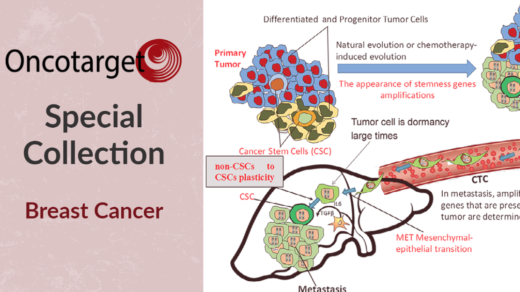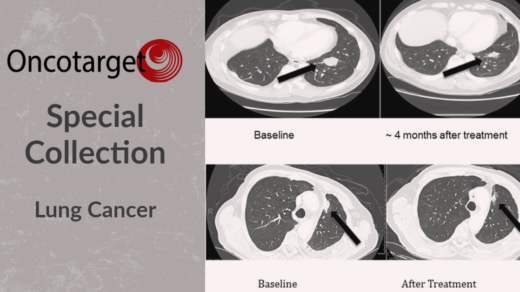In a 2023 study, researchers investigated hair loss and their findings may lead to a better understanding of tissue homeostasis, initiation of cancer and the aging process.
—
Hair follicles are dynamic structures that undergo cyclic phases of growth, regression and quiescence. The growth phase, known as anagen, lasts for several years, followed by a short regression phase called catagen. During catagen, most cells within the follicle undergo programmed cell death, but a small population of stem cells remains viable to replenish the follicle during the subsequent growth phase. Understanding the mechanisms involved in hair follicle regression is not only important for elucidating normal tissue homeostasis but also for studying pathological conditions such as cancer and aging.
In a recent study, researchers Bradley D. Keister, Kailin R. Mesa and Krastan B. Blagoev from the National Science Foundation, The Jane Coffin Childs Memorial Fund for Medical Research, Yale School of Medicine, Johns Hopkins University, Bulgarian Academy of Sciences, and Sorbonne Université shed light on the role of apoptotic cells in hair follicle regression and cell death. Their research paper was published in Oncotarget on October 19, 2023, entitled, “Apoptotic cells may drive cell death in hair follicles during their regression cycle.”
“Here, we use a quantitative analysis of the length of hair follicles during their regression cycle.”
The Role of Apoptotic Cells in Hair Follicle Regression
In this study, researchers suggest that apoptotic cells play a crucial role in driving cell death during hair follicle regression. Intravital microscopy in live mice revealed that the elimination of epithelial cells involves supra-basal cell differentiation and basal cell apoptosis, which are influenced by the synergistic action of TGF-β (transforming growth factor) and mesenchymal-epithelial interactions. The study also demonstrated that the basal epithelial cells are not internally committed to death, and the mesenchymal dermal papilla (DP) is essential in inducing apoptosis.
While the exact mechanism leading to the propagation of apoptosis towards the regenerative stem cell population remains unclear, the researchers proposed a quantitative analysis of the length of hair follicles during their regression cycle. The data obtained from this analysis suggested a propagation mechanism driven by apoptotic cells inducing apoptosis in their neighboring cells. Interestingly, the study found that apoptosis slows down as it approaches the stem cells at the end of the follicle, indicating the presence of a pro-survival signal released by these stem cells.
“In this paper we introduced a mathematical model of the hair follicle regression cycle that postulates that the regression is initiated by the dermal papilla, but that this signal affects only the cells adjacent to it.”
Hair Follicle Regression & Stem Cell Niches
To understand the dynamics of hair follicle regression, it is essential to consider the concept of stem cell niches. Adult stem cells, along with their supporting cells, form these niches, which maintain the functionality of renewable tissues in various organs. Stem cell niches have been identified in organs such as the colon, breast, skin, hair follicles, and bone marrow. Each organ has a distinct stem cell niche architecture, which can influence the rate of aging and susceptibility to cancer.
The study by Keister et al. highlights the importance of stem cell niches in hair follicle regression. The mesenchymal DP cells, located at the bottom of the follicle, were implicated in the initiation of regression through the release of a pro-apoptotic signal, possibly associated with TGF-β. While the DP cells are necessary for the initiation of regression, they are not required for the completion of the regression phase. This suggests that other mechanisms, in addition to the DP signal, contribute to the observed apoptotic propagation.
Quantitative Analysis of Hair Follicle Regression
The team conducted a quantitative analysis of hair follicle length during catagen to gain insights into the dynamics of regression. The study measured the length of hair follicles at two time points separated by 12 hours using intravital microscopy. The data revealed that shorter hair follicles regress at a slower rate compared to longer follicles. This observation suggests that the apoptotic propagation slows down as the dying cells approach the regenerative stem cell pool.
To explain the observed data, the researchers proposed a quantitative model in which apoptotic cells release a local signal that primes neighboring cells for apoptosis. Simultaneously, the stem cells release a pro-survival signal, creating a spatial gradient. This model is consistent with the experimentally measured distribution of follicle lengths and the deceleration of hair follicle regression. The simulations of the model demonstrated that the propagation of apoptosis along the follicle becomes slower and eventually stops when it reaches the stem cells.
The Power Law Distribution of Follicle Lengths
In addition to the quantitative analysis, the researchers investigated the distribution of follicle lengths during catagen. They found that the data obtained from the experiments were consistent with a power law distribution. (Note: The power law refers to the relationship between two quantities, stating that a relative change in one leads to a relative change in the other.) While the power law distribution was observed in the model, it is important to note that the biological lengths of the follicles make it challenging to have high confidence in this distribution. However, the model generated a power law probability distribution function, providing further support for its validity.
Implications & Future Directions
This research paper presents a comprehensive understanding of the role of apoptotic cells in hair follicle regression. The proposed model, which involves the interplay between apoptotic cells and stem cells, provides insights into the dynamics of regression and the maintenance of stem cell niches. Further research is needed to validate the model and explore the potential application to other stem cell niches in different organs.
The findings of this study have implications for the understanding of tissue homeostasis, initiation of cancer and the aging process. By unraveling the mechanisms behind hair follicle regression, researchers can gain valuable insights into the regulation of cell death and renewal in various tissues. This knowledge can potentially lead to advancements in regenerative medicine and the development of targeted therapies for conditions related to abnormal cell death and tissue regeneration.
“In conclusion, hair follicle regression may be governed by cell-cell induced programmed cell death, which slows down as the stem cell compartment is approached and does not affect the stem cell compartment from which the growth phase is initiated. […]. The generalization of the model to different geometries and topologies of different stem cell niches, as well as to the details of their stem cell renewal kinetics can address problems related [to] disease states like cancer and aging.”
Click here to read the full research paper in Oncotarget.
—
Oncotarget is an open-access, peer-reviewed journal that has published primarily oncology-focused research papers since 2010. These papers are available to readers (at no cost and free of subscription barriers) in a continuous publishing format at Oncotarget.com. Oncotarget is indexed/archived on MEDLINE / PMC / PubMed.
Click here to subscribe to Oncotarget publication updates.
For media inquiries, please contact media@impactjournals.com.



